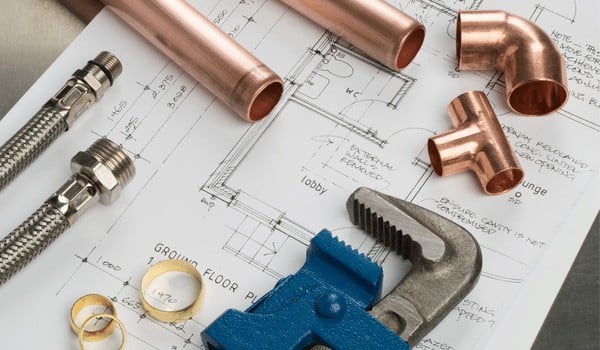If you rely on an under-sink water filter for cleaner drinking water, changing the cartridges regularly is a must.
It’s quick, straightforward — and the easiest way to protect your water quality (and your health). 💧
Whether you’re a first-timer or just need a refresher, this simple guide walks you through the process without the techy overwhelm. Let’s get started!
🧠 Quick Takeaways
- ✅ Regular filter changes = better water quality and system longevity.
- ✅ Most under-sink filters need swapping every 4–6 months (but always check your manual).
- ✅ You don’t have to shut off your home’s main water line — just the cold water valve under your sink.
- ✅ Having a fresh O-ring handy can prevent surprise leaks during replacement.
- ✅ Always flush your new filter before drinking to clear any dust or debris.
🛠️ How Do These Systems Actually Work?

Under-sink water filters aren’t like bulky whole-house systems — they’re smaller, simpler, and way easier to maintain.
Here’s the basics:
- ✅ They connect directly to your cold water line under the kitchen sink.
- ✅ Water passes through one or more filter stages to remove contaminants (like chlorine, lead, PFAS, and more).
- ✅ Clean, filtered water comes out through either your main faucet or a special filtered-water tap.
💬 Good to Know: You don’t need to shut off your home’s main water supply to swap filters — just the valve under your sink. It’s a huge time-saver compared to whole-house setups.
Looking for a full breakdown of top-rated systems? Check out our roundup of under-sink filters.
💧 Why Changing The Filters Actually Matters

Water filters don’t last forever — and ignoring old cartridges can cause some sneaky problems:
- ✅ Contaminant Buildup: As filters fill up, they stop trapping chemicals and bacteria — meaning you could end up drinking exactly what you wanted to avoid.
- ✅ Pressure Problems: A clogged filter increases pressure inside the system, putting extra stress on O-rings, housings, and fittings (and risking leaks or breaks).
- ✅ Taste and Odor Issues: Old filters can make your water taste metallic, stale, or just weird — a dead giveaway it’s time for a swap.
- ✅ System Damage: Letting filters go too long without replacement can permanently damage your system — and no one wants to deal with expensive plumbing repairs.
💬 Pro Tip: Choosing NSF-certified filters ensures you’re getting tested, proven performance — not just marketing claims. (Here’s why NSF Certification really matters.)
⏳ How Often to Change Filters

There’s no one-size-fits-all answer — but here’s a general rule of thumb:
- ✅ Sediment Filters: Change every 6 months — sooner if your water looks cloudy or gritty.
- ✅ Carbon Filters: Swap them every 4–6 months for the best chlorine, chemical, and odor removal.
- ✅ Reverse Osmosis Membranes: These heavy hitters usually last 2–3 years — but only if you stay on top of pre-filter changes.
- ✅ Real-World Tip: If your water pressure drops noticeably, your water tastes funny, or you see scale buildup, it’s time to change your filters even if the “official” schedule says otherwise.
💬 Good to Know: Water quality matters! Dirtier or harder water = faster filter wear. If you haven’t tested your tap water lately, here’s how to test your water easily.
🧰 Tools You’ll Need

Before you get started, having everything you need close by makes the whole job way smoother — and way less messy. Here’s your quick checklist:
| 🔧 Tool or Supply | 🛠️ Why You Need It |
|---|---|
| New Filter Cartridge(s) | Fresh filters = clean, safe drinking water |
| Filter Wrench | Helps loosen tight housings without damage |
| Bucket or Large Bowl | Catch any drips or spills under the sink |
| Paper Towels or Rags | Wipe up drips and dry parts after cleaning |
| Silicone Grease (Food-Grade) | Lubricate O-rings to prevent leaks |
| Optional: Spare O-Rings | Good backup if the old one looks cracked or worn |
💬 Pro Tip: If you lost your original filter wrench, you can usually grab a replacement online or from your filter manufacturer — they’re pretty universal by size.
🛠️ How to Change Your Filter
🛠️ Changing your under-sink water filter is easier than you think — and doing it right keeps your water crisp, clean, and safe.
Here’s a simple breakdown to walk you through the process without any guesswork.
| Step | What To Do |
|---|---|
| 🚿 Turn Off Water | Shut off the cold water supply under your sink to avoid leaks. |
| 🔻 Release Pressure | Open the filtered faucet and let water flow out to depressurize the system. |
| 🔧 Remove Filter Housing | Use the filter wrench or your hands to unscrew the housing carefully. |
| 🧼 Clean Parts | Rinse and wash the housing with warm, soapy water. Add a little bleach if you want extra sanitization. |
| 🧩 Check O-Rings | Inspect and replace cracked or damaged O-rings before reassembly. |
| 💧 Insert New Filter | Place the new filter properly inside the housing — snug but not forced. |
| 🔩 Reattach Housing | Screw the housing back onto the system — hand-tighten only to avoid cracking. |
| 🚰 Turn On Water | Slowly turn the water supply back on and watch for leaks around the housing. |
| 🔄 Flush the System | Let filtered water run for 5 minutes to clear out carbon dust or loose particles. |
| 🗑️ Dispose or Recycle Old Filter | Check if your old filter can be recycled — some brands offer recycling programs! |
💬 Good to Know: It’s smart to keep a few extra O-rings and a backup filter on hand — they’re cheap insurance against leaks and downtime. And always flush new filters before using them for drinking water!
💡 Pro Tips for Long-Term Care

Changing your filter isn’t just about following a sticker schedule — your water quality, system type, and usage habits all matter.
Here’s when you should swap it out to keep your drinking water safe and fresh:
| 🚰 Situation | 🛠️ Filter Replacement Timing |
|---|---|
| Standard Carbon or Sediment Filters | Every 6–12 months |
| Reverse Osmosis Membranes | Every 2–3 years |
| High Water Usage Households | Every 4–6 months |
| Poor Quality Source Water | More frequent changes as needed |
| Per Manufacturer Instructions | Always follow model-specific guidelines |
💬 Good to Know: If your water flow slows down, your filtered water tastes odd, or you smell anything funky — don’t wait. Those are signs your filter needs changing now, no matter what the calendar says.
🧼 Final Thoughts
Changing your under-sink water filter isn’t just about ticking off a maintenance box — it’s about making sure every sip of water you drink is as fresh, clean, and safe as it should be. 💧
- ✅ Regular filter changes protect your health (and your wallet).
- ✅ Staying on schedule helps your system last longer — without costly repairs.
- ✅ A few basic tools and a little know-how make the swap quick and painless.
Think of it like an oil change for your water — easy to overlook, but absolutely essential. 🚿
With just a little regular maintenance, your under-sink system will keep delivering crisp, contaminant-free water for years to come. Cheers to better water, one filter change at a time! 🥂✨
 122 people found this helpful. Was this guide helpful to you?
122 people found this helpful. Was this guide helpful to you? 


